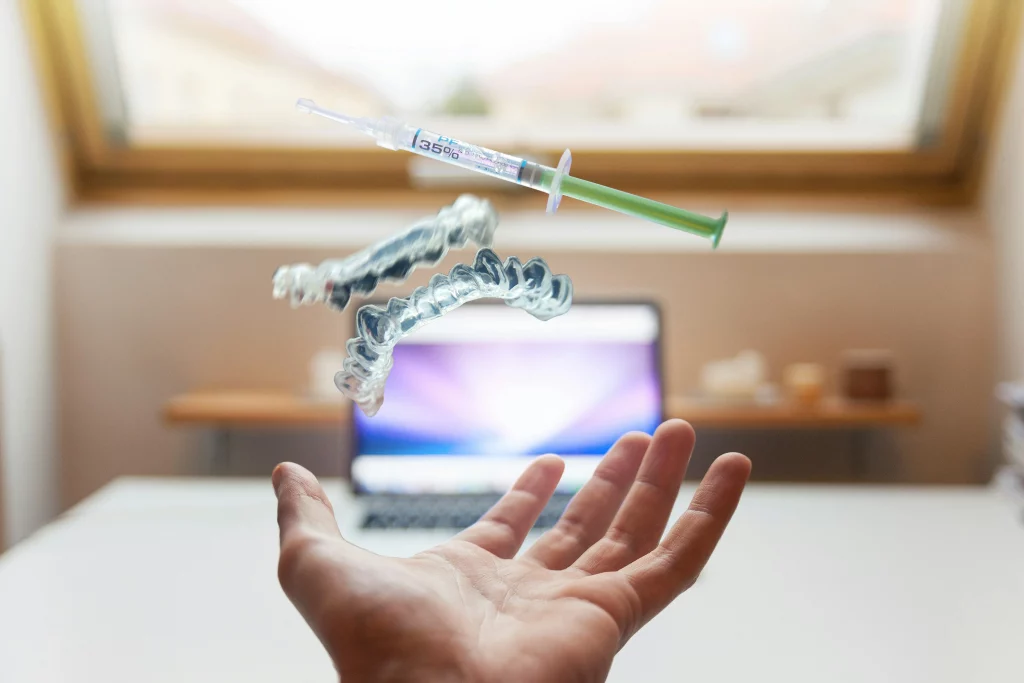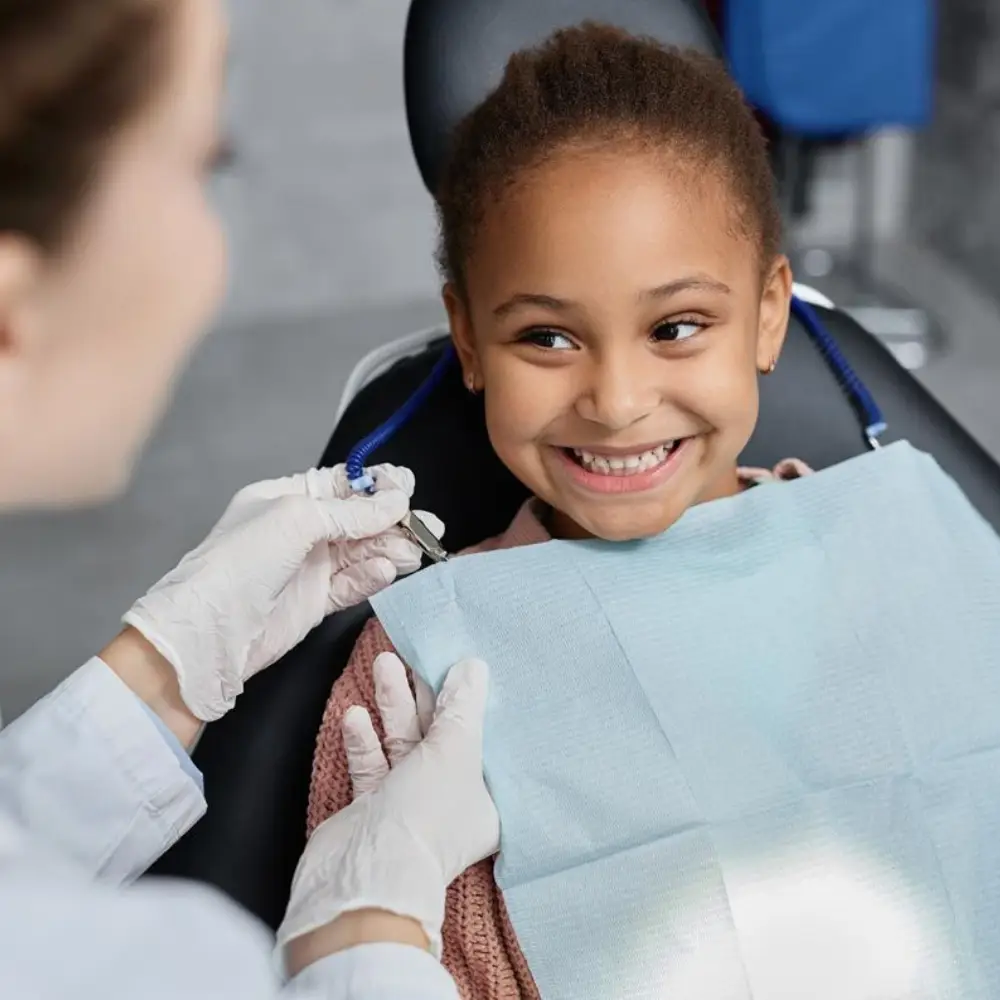Invisalign has become one of the most used orthodontic treatments besides straightening of teeth to enhance the manner in which people speak. Though the majority of people consider aligners to be an entirely cosmetic tool, in most cases, they serve an unnoticed purpose of facilitating clear speech and general oral performance. Invisalign can offer a solution to children and adults who have problems with their lisps, slurred sounds, or speech problems caused by bites, that extend beyond looks.
Clear aligners can slightly push the teeth into the right positions, thus balancing the tongue and jaw positioning, allowing one to speak with confidence in the enunciation of words. This implies that Invisalign is not only about making a beautiful smile, but creating the improvement in communication and self-esteem in everyday conversation.
Connection Between Teeth Alignment and Speech Issues

How your teeth are aligned does more than just make your smile look good, it also has a significant influence in how well you speak. Malocclusion or improper bite may cause the tongue to move in an abnormal way resulting in lisps or slurring words or inability to pronounce some sounds. Dental alignment and speech go hand in hand, whether it is the early development of speech in childhood or the speech of adults. The recognition of this relationship can help to understand why orthodontic procedures such as Invisalign are usually prescribed not only to make the person more attractive, but also to have more clarity and confidence in daily conversations.
How Misaligned Teeth Disrupt Normal Speech
Speech is based on the cooperation of tongue, lips, teeth, and air. When teeth are crossed or bite off, the tongue will be unable to reach the correct places inside the mouth to produce clear sounds. As an example, an overbite may result in a lisp when speaking the letter s and gaps in between teeth may result in the escape of air. Such interruptions tend to cause people to be self-conscious and may interfere with professional and social life.
Common Pronunciation Problems Caused by Bite Irregularities
The speech problems associated with dental alignment that are the most common are lisps, and they usually accompany overjets, open bites, or teeth spacing. In a few instances, teeth that are too far forward or out of place may hinder the normal flow of the tongue causing the sounds to be muffled or unclear. There also can be gaps between teeth that produce some unwanted whistling during the speech and misplaced teeth that can make it more difficult to pronounce such sounds as th or r. Such challenges may persist even after years of speech therapy in case the cause of such problems is not addressed properly structural misalignment.
Why Dentists and Speech Therapists Collaborate on Treatment
The work of speech-language pathologists may be closely related to the work of dentists and orthodontists as articulation improvement needs structural correction and behavioral support. The mechanical aspect is covered with orthodontic treatment, like braces or aligners, straightening the teeth and removing physical impediments that impede clear speech. Simultaneously, speech therapy assists in retraining the position of the tongue, airflow, and the coordination of the muscles of the mouth to make sure that articulation is correct. This combined therapy does not only solve the current speech problem but also makes sure that it never comes back, providing long-term effects on the patient in terms of both functionality and self-confidence.
Invisalign’s Role in Supporting Speech Therapy

Besides straightening teeth, Invisalign can serve as an important step in eliminating some speech difficulties. Due to the fact that the aligners are clear, removable, and fashioned to be comfortable, they do not interfere with tongue movement as much as conventional braces do when correcting dental misalignment. This facilitates the patients to do speech exercises during their treatment. Invisalign is beneficial when combined with speech therapy to produce the optimal mouth conditions under which sound articulation can occur, accelerating the process and rendering it more long-lasting.
How Correcting Alignment Can Improve Sound Clarity
Invisalign is a system that moves teeth into healthier positions gradually and therefore, the tongue is able to hit the correct points necessary to speak clearly. The more the alignment is improved, the more natural the airflow through the mouth will be and this has direct effect on clarity in sounds such as s, t, and r. Patients report that as they improve their bite, they are able to say words more easily that they previously could not. As opposed to large braces which can temporarily alter speech, the Invisalign trays are thin, smooth and comfortable.
This design enables the patient to practice correct tongue positioning throughout treatment without being distracted, and therefore, remain consistent with speech training and strengthen gains. With time, the synergy of mechanical correction by Invisalign and behavioral training by therapy tends to lead to the observable and long-term positive changes in communication.
Case Studies: Speech Improvements After Invisalign
- Case 1: A 10-year-old child with an open bite struggled with a persistent lisp. Within six months of Invisalign treatment, her bite closed enough that her “s” and “z” sounds became clearer, complementing her speech therapy sessions.
- Case 2: An adult professional noticed that her overbite caused her speech to sound muffled during public presentations. After completing Invisalign, her articulation sharpened, boosting both confidence and performance at work.
These cases show that while not a universal fix, Invisalign can be a vital piece of the puzzle for speech concerns.
Invisalign vs. Traditional Braces for Speech-Sensitive Patients
Conventional braces work very well to correct the alignment though they may in some cases worsen the speech problems before they improve. The tongue movement is usually affected by brackets and wires and temporary pronunciation and clarity difficulties arise. Invisalign, however, utilises smooth, removable trays that fit tightly over the teeth, a much less invasive alternative. The design reduces the interference with speech and is of particular interest to patients already self-conscious about their clarity or those who depend on confident communication at work or in social situations.
Who Should Consider Invisalign for Speech Support
Invisalign will not be beneficial to everyone with speech difficulties, however, it can be a very effective aid in conjunction with therapy. Individuals whose teeth are visibly misaligned, e.g. those with crowded teeth, gaps, and bite issues, have a higher likelihood of having speech difficulties associated with the oral structure. Invisalign can be of special assistance to children who are learning a language, adults who need to improve their speech professionally, or all those who prefer a non-obvious solution that helps not only to improve dental health but also to communicate more clearly.
Children in Early Speech Development Stages
Early orthodontic assessment can be of great benefit to children whose speech defects are the result of bite irregularities. Speech errors may occur when the tongue does not move correctly through the teeth due to the presence of such problems as overbite, underbite, or crossbite. The early treatment of these concerns not only aids in the development of proper speech, but also helps to avoid the difficulties becoming more serious to deal with later in life. Invisalign First, created with the younger patients in mind, will help teeth align into a better position without disrupting the natural language development of the kids. This two-fold advantage will establish a solid basis on oral health and more effective communication.
Adults Struggling with Lingual Sounds or Lisps
Dental-related speech issues that persist into adulthood can be frustrating and discouraging to the adult and particularly when effective communication is critical in everyday life or at the workplace. Malocclusions, gaps, or malocclusions may disrupt the way the tongue and lips shape sounds, resulting in a lifelong sound articulation difficulty. Invisalign offers a mechanism to tackle these physical obstacles, straightening the teeth, unobtrusively and over time, without the appearance or pain of braces. During treatment, adults can feel an increase in clarity of speech, which brings them more confidence during conversations, presentations, and other social situations.
Multilingual Professionals Requiring Clear Speech
In the case of individuals speaking two or more languages, even more important is the exact positioning of the tongue and coordination of the mouth. Every language has a set of sounds that belong to it, and the tongue, lips and teeth must combine in very particular ways to make the sounds of the language. Once this process is disrupted by dental misalignment, there may be unclear pronunciation, difficulty in distinguishing between sounds, or extra effort on alternating between languages. Invisalign can assist in removing these obstacles by slowly fixing the bite problems and positioning of the teeth, so that multilingual speakers can speak confidently and clearly in all of the languages they communicate in.
What to Expect During Invisalign Treatment with a Speech Concern
It can be both thrilling and nerve-racking to start Invisalign treatment when you are dealing with a speech issue. One of the questions that many patients ask is how the aligners will impact their speech and especially during the initial weeks. The positive side is that a majority of individuals adapt fast and Invisalign is made to be comfortable and discreet. Knowing what to expect with the process can alleviate some fears, prepare you to endure the adaptation period, and assure you that treatment is not working against you but with you in relation to your speech development.
Consultation with Both Dentist and Speech Therapist
It is usually initiated by a combined consultation. At this phase the orthodontist will thoroughly examine the bite, alignment of teeth and the general structure of the oral cavity, and a speech-language pathologist (SLP) will determine what specific sounds or speech patterns are affected. This collaborative treatment is such that it does not only concentrate on the alignment of teeth, but also on the mechanics behind the clear speaking. Incorporating dental correction and specific speech strategies, the care team is able to create an individual treatment plan that can lead to the maximum improvement of both oral health and communications.
Treatment Timeline for Speech-Related Benefits
The majority of patients will start experiencing positive changes in their speech gradually during the initial months of Invisalign treatment. Less dramatic movements of the tongue and airflow will be more feasible as teeth come into proper alignment. But full correction usually comes within the whole period of 12 to 18 months of Invisalign treatment depending on the severity of the case. Speech therapy sessions are normally maintained in order to accelerate the process. This combined treatment enables the patient to learn how to communicate better and their smile to improve over time, making them enjoy the functional and confidence-building effects of the treatment earlier.
Using Attachments and Trays Without Hindering Speech
Attachments, little bumps which are tooth colored and attached to some teeth to assist in the precise movement, can temporarily alter the way the tongue moves within the mouth. This may on some occasions lead to a slight alteration in how some sounds are made at the beginning of treatment. Luckily, the majority of patients would adjust fast since tongue would naturally acclimatize to the new surfaces. Even the clear aligners themselves are comfort-oriented and tend to disrupt speech much less than conventional braces, not to mention that they are a desirable choice of people who are worried about communicating with others.
Frequently Asked Questions (FAQs)
1. Can Invisalign help reduce or eliminate lisps?
Yes. If a lisp is caused by misaligned teeth or an open bite, Invisalign can gradually reposition the teeth into a healthier alignment. This allows the tongue to make proper contact with the roof of the mouth and teeth, which is essential for clear speech. Over time, many patients find that their speech naturally improves as their bite becomes more balanced. When paired with speech therapy, progress is often faster and more noticeable. Together, these treatments can lead to significant long-term improvement in lisp reduction.
2. Do aligners interfere with talking during treatment?
Some patients notice a short adjustment period during the first few days of wearing new Invisalign trays. This is usually when the tongue is getting used to the aligners and may cause a temporary change in speech. However, because Invisalign aligners are thin, smooth, and custom-fitted, they are designed to minimize disruption. Most people adapt quickly, and any speech differences often fade within days. Compared to traditional braces, Invisalign typically allows for clearer and more natural speech throughout treatment. Overall, patients can expect their speech clarity to remain well-preserved while their smile improves.
3. Is Invisalign recommended by speech-language pathologists?
Speech-language pathologists often work closely with orthodontists when dental alignment affects speech. Their role is to identify articulation issues and provide strategies to improve clarity. While they don’t directly prescribe Invisalign, many recognize its value in correcting bite problems or misaligned teeth that contribute to speech difficulties. When paired with consistent speech therapy, Invisalign can support faster and more lasting progress. This collaborative approach ensures patients receive both functional and aesthetic benefits. Ultimately, combining orthodontic care with speech therapy can greatly enhance communication and confidence.
4. How soon can speech improvements be noticed?
Improvements with Invisalign vary from person to person, depending on the severity of misalignment and the specific speech concern. Some patients begin noticing clearer speech within just a few months of treatment. Others may need to progress further, sometimes completing most of their Invisalign plan before achieving maximum results. Speech therapy plays a key role in speeding up progress by retraining the tongue and improving articulation. When combined with proper orthodontic care, patients often see steady and lasting improvements. This dual approach not only enhances clarity but also boosts overall confidence in communication.
5. Should I start Invisalign before or after speech therapy?
The best outcomes often occur when Invisalign and speech therapy work hand in hand. Invisalign corrects the underlying structural issues, creating the proper alignment needed for clear speech. At the same time, therapy retrains tongue placement and airflow, helping patients adjust more quickly and effectively. This dual approach not only accelerates improvement but also ensures longer-lasting, more natural results. Patients who combine both treatments often experience greater confidence in their speech and overall communication.
Call to Action
If you’ve struggled with speech challenges tied to your bite or alignment, now may be the time to explore Invisalign as a supportive solution. A consultation with both your orthodontist and speech therapist can determine whether aligners could help unlock clearer, more confident speech. Don’t let dental misalignment stand in the way of communication—take the first step toward a healthier smile and stronger voice today. Contact Graham Park Dental now!


